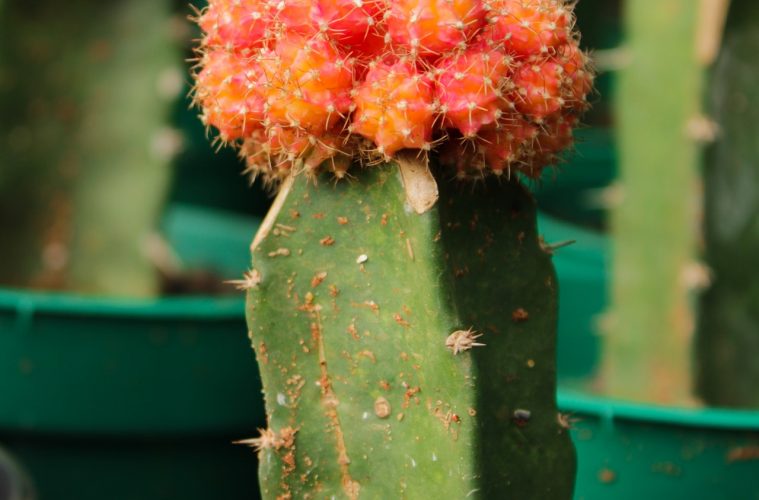Have you ever seen a lineup of cactuses and noticed the ones with bright, almost neon tops?
Gymnocalycium mihanovichii, also known as moon cactus, is originally from South America, mainly found in Paraguay and Argentina. But the original plant looks very different from the one you might recognize.
People are often surprised to find moon cacti are naturally green. However, specialised mutations have resulted in the stunning range of colors we see today. You can find them in bright red, orange, yellow, and even pink.
The reason for this mutation is that moon cacti lack chlorophyll. This absence of chlorophyll makes other pigments within the cells more visible, giving them their bright colours. But there’s a downside to this lack of chlorophyll – moon cacti cannot grow on their own. They need to be grafted onto another succulent that has chlorophyll to survive.
That’s why you’ll always see the colorful tops of Moon cacti attached to a green base. Once attached, the base of the plant will do most of the work to keep the top looking pretty.
This arrangement has some downsides. Moon cacti are a bit more delicate than other cacti. You have to manage the lighting needs of two different plant species in one. They also don’t typically live very long, lasting around a year, or a bit longer in perfect conditions.
However, despite these negatives, moon cacti are still great plants to add to your succulent collection. Their colors are unmatched and they look even more impressive when they flower. They’re also great for indoor growth, which can be challenging for other types of succulents. P
When it comes to light, moon cacti need a balance between direct and indirect sunlight. They are typically kept as indoor plants to protect them from harsh sunlight. They need very little water, like other cacti, as they are sensitive to root rot. The soil should be well-draining and gritty to provide the texture these plants prefer. Moon cacti do not typically require fertilizing, but if you want to promote flowering, use a low-concentration succulent-specific fertilizer once per year in spring.
Featured image: Stuti via Pexels

